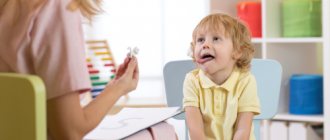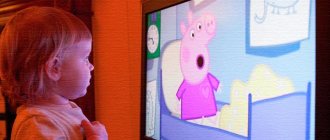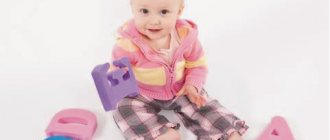Every parent loves to watch their child's development. With every month of his life, the range of his skills and abilities grows. Therefore, if the baby does not speak or uses 2-3 words, adults begin to worry.
Expressive speech in children can be developed late for various reasons. These include organic lesions, psychological stress and much more. With this problem, understanding of spoken speech is preserved. That is, such children can show with a gesture what they need, take their mother by the hand.
General information
In speech therapy, this disorder is identified as general speech underdevelopment (GSD). It can be on several levels. As a rule, it is advisable to talk about problems by the age of three. This is a critical period for speech development. If by this time the situation has not improved, then parents should visit specialists.
First of all, they turn to a neurologist. After which it is advisable to listen to a psychiatrist, audiologist (to determine the level of hearing) and only then a speech therapist.
Not every parent knows what exactly is considered developmental delays. By the age of one year, a child should speak 10 words. Usually they are simple “mom”, “dad”, “give”, etc. The use of onomatopoeia “ava”, “kisa”, “bibi”, etc. is allowed.
By two years, the active vocabulary already consists of 200 words, there is a simple phrase “I eat”, “give Masha”, etc. By three years the figure increases to 800 words, parts of speech, prepositions and some sounds appear.
Speech continues to develop even after three years. Therefore, if it begins to seriously lag behind the norm, it will be difficult to catch up. Problems with speech are fraught with disruption of all other mental functions:
- memory;
- thinking;
- attention, etc.
If a child at three years old has no words or only 2-3, parents should worry and start acting.
Treatment of speech disorders in children
Treatment of speech disorders in children is carried out in several directions - speech therapy, psychological, pedagogical, neurological work with the possible use of medications. The participation of parents and the family environment play a huge role in the success of treatment.
If a children's speech therapist can cope with minor speech disorders, then diseases such as various alalia require an integrated approach and the participation of several specialists, and the treatment itself can be quite lengthy.
In most cases of treatment of speech disorders, positive dynamics are noticeable. However, at school, a child with alalia and aphasia may have problems reading and writing. To improve the integral properties of the brain, children are often prescribed nootropic drugs that improve memory, neural connections, and stimulate mental processes.
Parents should remember that speech disorders in children of preschool age can lead to consequences in the future if correction and treatment are not started.
Main reasons
Children's age is sensitive to various kinds of influences. Severe pregnancy, childbirth, illness and head injuries will negatively affect its development.
In recent years, the number of children with such pathologies has only been growing. Experts attribute this to various reasons. Some believe environmental degradation plays a role. Others highlight the main risk factors:
- chronic diseases of the father and mother;
- age of women in labor;
- bad habits (alcohol, drugs, smoking);
- trauma during childbirth.
There are also so-called social factors. An increase in the number of smartphones, tablets, 24-hour television. Many cartoons and games for children with advertising easily attract the attention of the baby. Therefore, they lose the need to study and interact with the outside world.
In many cartoons, acid colors and shrill mechanical voices predominate - all this quickly captures the child and his attention. After which he is of little interest in the ordinary speech of an adult.
When communicating with other children and adults, he looks at the face and unconsciously tries to repeat the movements of the organs of articulation. Without such visual contact, it will be difficult for him to make sounds.
Types of dysarthria
The type of disorder, as well as its symptoms, depend on the location of the affected center in the brain:
- The bulbar form develops due to damage to the nuclei of the cranial nerves located in the medulla oblongata. Accompanied by pronounced degradation of speech activity. It becomes extremely indistinct, sounds are difficult to separate from each other. The voice is quiet, the person speaks “in the nose.” The acts of chewing, swallowing, and sucking are impaired, and profuse salivation is observed. There is no facial expression.
- The pseudobulbar form is characterized by damage to the corticobulbar pathways. Along them, the impulse passes from the cortical centers to the articulatory components of the speech-motor apparatus. When this connection is disrupted, the bulbar nerve nuclei become overactive. This causes hypertonicity of the speech muscles. The vocal cords, being in a tense state, cease to vibrate correctly when trying to reproduce sounds, which affects the character of speech. It becomes slow, incomprehensible, and difficulties appear in switching from one speech posture to another. There are difficulties in the act of swallowing, ptyalism.
- Subcortical or hyperkinetic dysarthria manifests itself against the background of damage to the subcortical nuclei of the brain, which is accompanied by hyperkinesis. They are expressed by involuntary contractions of facial and “speaking” muscles. As a result, the patient’s speech is saturated with a sudden change in its usual rhythm. It can slow down, becoming monotonous and incomprehensible, or, conversely, speed up. Then speech becomes super fast, a person can swallow endings, rearrange syllables, and stumble verbally. Often this form is accompanied by stuttering.
- The cortical form develops with focal brain damage. It is accompanied by difficulty in voluntary speech activity.
- The cerebellar form manifests itself in pathologies of the cerebellum. It is characterized by a violation of the organization of the speech flow. It is associated with a break in the fluency of speech. There is a jerky, intermittent tone, chanting, and involuntary shouts.
Diagnosis differentiation
Expressive language disorder refers to several possible illnesses. They go under the code F80.1. First of all, this is the actual delay in speech development (SDD). Expressed in the absence of speech or its insufficient level.
The next thing is motor alalia. This is a serious violation that should not be confused with ZRR. It affects specific areas of the cerebral cortex and is visible on MRI. In the case of ZRD, we are talking about the immaturity of the nervous system, but it is successfully overcome and, to some extent, partially eliminates itself.
Another diagnosis that is included in this group is aphasia, that is, speech breakdown. It occurs due to stroke, head injuries and serious illnesses (tumors, meningitis). In children, this disorder is rarely detected. It can appear only closer to school age. Such a disorder will also be visible on MRI, since the cerebral cortex is affected.
It is not always easy to separate mutism from delay. This problem is characterized by normal speech development, but a complete reluctance to use it. This happens for various psychological reasons. Most often, the child agrees to communicate only with certain people, for example, with the teacher. He doesn't use the pointing gesture.
Hearing and intellectual impairments must be excluded. With these disorders, speech may be limited to simple imitation or completely absent.
Some specialists make a diagnosis of LDRD - delayed psycho-speech development. According to neurologists, such a concept does not exist. The child must have either mental development disorder or mental development delay (MDD).
Expressive and impressive speech in speech therapy
Speech activity of children is divided into 4 independent forms:
| Forms related to expressive speech | Forms related to impressive speech |
|
|
Expressive or motor speech is the process of a growing person producing specific sounds and letters using the mouth and vocal cords or writing skills. Broca's area, located in the left hemisphere in people with a dominant right hand, or in the right hemisphere in those who carry out everyday activities with the help of their left limb, is responsible for this function in the child's body.
In the presence of pathological processes or injuries to the brain center in question, children are physically unable to clearly express their thoughts, reproduce them on paper, while clearly understanding the task and information perceived aurally. The opposite of expressive speech is impressive, or sensory.
Its essence lies in the clear awareness by the brain centers of information perceived by a person through the organs of hearing or vision.
Wernicke's area is responsible for this function. If a child, as a result of an injury or due to a genetic disorder, has dysfunction in this area of the cerebral cortex (located in the left temple area), he cannot perceive words, since he does not understand their meaning and does not even identify the emotional coloring.
At the same time, his hearing organs function normally, which, when conducting a medical examination of the health status of a growing person, can provoke a misunderstanding by the pediatrician of the reasons for the significant developmental delay of a particular young patient.
In some cases, the child’s body adapts to physical “disadvantages”, compensating for them by making other senses of perception more developed.
Characteristics of children
Classes with children with speech disorders should begin as early as possible. They are conducted by a speech therapist. To better structure the work, it is necessary to take into account all the features of the violation.
Children with mental retardation have the following characteristics:
- low level of attention;
- limited auditory memory;
- reduced cognitive interest.
The semantic and logical part of thinking is usually normal, but following instructions of 3-4 steps is difficult. The sequence may change or certain elements may be lost.
Non-critical motor impairments may be observed. Such children are awkward, slow, and do not perform complex sequences of actions well.
There are also problems with the development of fine motor skills. Interest in drawing is reduced, lacing and other delicate actions are difficult.
In the absence of timely treatment and correctional assistance, secondary intellectual impairment occurs. The later a speech therapist appears in a child’s life, the more difficult it will be to compensate for the defect.
Medical and psychological support is required. A competent neurologist will help correct the functioning of the nervous system, and a psychologist will develop mental functions such as memory, thinking, attention.
A specific description of the child’s problems will allow specialists to competently organize their actions.
Correction
Correcting delayed development of expressive and impressive speech requires an integrated approach.
The specific set of measures taken is determined by the speech therapist, taking into account the actual data of a particular small patient:
- nootropic drugs (stimulate the activity of cells in the cerebral cortex, which improves memory in children, enhances attention, the ability to concentrate, normalizes sleep and general mental state, and so on);
- physiotherapeutic procedures (for example, microcurrent therapy, which involves the active impact of minimal current discharges on biologically active areas of the cerebral cortex);
- developmental classes with a speech therapist and defectologist (specialists focus their efforts on improving the little person’s memory and general development of thinking);
- speech therapy massage (a complex effect on the facial muscles, promoting the development of speech in a small person);
- performing play-based exercises aimed at developing facial muscles (for example, “Clock”, in which a 2-3 year old child needs to stick out his tongue and move it from side to side; onomatopoeic exercises (imitation of rain, animal voices, etc.) or voicing poems (the adult shows - the child voices his actions, after which the roles change).
Expressive and impressive speech should normally be developed in children at a basic level by the age of 4-5 years. In speech therapy, there are a large number of ways to stimulate a child’s ability to correctly express his thoughts, which he can practice not only with a specialist, but also at home alone with his parents.
Despite the importance of the speech aspect in the overall development of a growing person, adults are not recommended to put moral pressure on the child and force him to study. Instead, you should talk to him as much as possible, take an interest in the child’s opinion and expand his horizons.
Sample work plan
The disorder is based on problems with all parts of speech. Therefore, at the first stage, it is important not only to practice sound pronunciation, but also to evoke any response speech. Even in the form of elementary onomatopoeia.
Be sure to develop the child’s perception. To do this, he is introduced to different materials. For example, they let you sort through cereals, beads, and sand. You can show fruits and vegetables, offering to smell, touch, and taste them.
The development of fine motor skills directly affects speech, since these two areas of the cortex are located nearby in the brain.
The more impressions there are in the baby’s life, the better. The main thing is not to overdo it. Excessive emotions provoke stuttering.
At the first stage, the speech therapist’s task is to create a desire to contact and interact. To do this, they use finger theater, toys and simple onomatopoeia, like “Who says what?”
In severe cases, children do not use the pointing gesture. In this case, they forcefully take the hand, fold their fingers and point at the toy or picture with the index finger.
The Novikova-Ivantsova technique has proven itself well. It is based on singing vowel sounds. With motor alalia, it is sometimes difficult for children to make a certain arrangement of the organs of articulation. In this case, it is done forcibly. The adult uses his fingers to purse his lips and move the child’s jaw.
Don't be afraid of crying or other negative emotions. This is a normal reaction due to the immaturity of the cerebral cortex.
After you manage to get the first words, you need to try to build phrases. For example, showing a picture and saying: “Mom, go.” Be sure to achieve not only the reproduction of the phrase, but also the understanding of what was said.
The child must be able to correlate the image and the phrase. Only then will his speech develop. Work is definitely underway to practice sound pronunciation. To begin with, they work on the sounds of early ontogenesis: vowels, back-lingual (“K”, “G”, “X” and soft pairs), labials (“V”, “F” and others).
Articulation gymnastics in front of a mirror is mandatory. From the first lessons, the speech therapist teaches the child to control himself. Only after this will you be able to achieve results.
Correctional work to eliminate expressive speech disorder lasts 2-3 years. In severe cases, it takes up to five years. Parents also need help, since only they are able to conduct classes every day and do homework with the child.
Sometimes at school age there may be difficulties with writing and reading, which are expressed in specific errors. In this case, a speech therapist will help.
Disorders
Expressive and impressive speech in speech therapy, namely the level of its development in a particular young patient, determines the direction of additional classes designed to adapt the child to age-related psychological and physiological changes. For the convenience of providing assistance to children, speech therapists decided to classify speech disorders into subtypes.
Having different views on the course of therapy, specialists have so far failed to come to a common decision. Despite the presence of many options, the most popular of them is the classification of L. O. Badalyan.
Associated with serious disturbances in the functioning of the central nervous system
According to Badalyan, it is advisable to classify lesions of the child’s nervous system at the stage of intrauterine development or after the birth of a child into several forms.
For example:
| Form of speech disorder | a brief description of |
| Aphasia | With this type of disorder, the child experiences a breakdown of the maximum number of speech components. This dysfunction occurs due to significant damage to the cortical language areas of the brain. |
| Alalia | In the presence of the speech disorder in question, the developmental delay of a particular person occurs according to a pattern similar to aphasia. The only difference is that alalia occurs at the stage of pre-speech development. |
| Dysarthria | It occurs due to insufficient development of the muscles of the speech organs. If dysarthria is present, the child cannot correctly compose and voice his thoughts. Depending on which area of the brain was affected, speech therapists classify dysarthria into:
Each form of speech disorder requires taking special measures to eliminate it. |
Associated with minor changes in the functioning of the central nervous system
Forms of speech disorder arising due to functional deformations of the central nervous system are:
- stuttering (when voicing one word, the child repeats the same compound syllable several times);
- mutism (the child does not respond to requests from other people and does not react to what is happening);
- surdomutism (the child is unable not only to perceive information by ear, but also to reproduce it independently).
Associated with deviations in the structure of the organs of the articulatory apparatus
The forms of speech disorders provoked by the imperfect structure of the organs of articulation are considered to be:
- mechanical dyslalia (the child does not pronounce sounds or deliberately distorts them due to the lack of physical ability to pronounce them correctly, for example, in the presence of a short frenulum of the tongue);
- rhinolalia (the child does not pronounce nasal sounds due to the incorrect structure of the ENT organs).
Various origins
Speech therapists include speech disorders of various origins as delays in the development of a child’s speech for non-physiological reasons:
- birth as a result of premature birth;
- the presence of serious diseases of the internal systems of the body;
- incorrect form of education and general development.
How to Diagnose and Treat the Disorder
Diagnosis of the disorder is the prerogative of neurology and speech therapy. Instrumental research methods play a special role in making a diagnosis: EEG, electroneurography, electromyography, MRI, transcranial magnetic stimulation.
The speech therapist, in turn, must examine the condition of the speech-motor organs, facial and facial muscles. The specialist evaluates the nature of speech: how understandable it is for perception, the correct pronunciation of individual sounds, its tempo, rhythm, intonation, volume, synchronicity of the articulatory apparatus, and grammatical aspects.
Written speech is assessed by asking the patient to copy some text or take dictation.
Treatment of the disorder should begin with relief of the underlying disease. But speech disorders cannot be ignored.
It is advisable to begin correction of dysarthria as quickly as possible. Feeling his own conversational peculiarities, the patient will try to limit communication in society. This will lead to worsening of the speech defect. For example, from the first stage it will develop into the second. Isolation can also make it difficult to understand normal speech.
Therefore, in addition to treating the underlying disease, correction of speech defects is carried out. For this purpose, physiotherapy methods are used:
- various types of massage, including Shiatsu - influencing reflexogenic points using the finger method;
- acupuncture;
- physical therapy, including the use of special simulators;
- medicinal baths.
It is permissible for a psychoneurologist to prescribe psychotropic drugs as aids to normalize the psycho-emotional background.
Speech therapy treatment consists of using:
- speech therapy massage – working out the facial muscles. It allows you to improve blood circulation and restore normal muscle tone. Used to improve speech motor skills;
- exercises for voice production - the work of the vocal cords, volume and timbre of the voice are regulated;
- finger gymnastics – development of fine motor skills of the hands, which is interconnected with speech function;
- learning to position the organs of articulation for correct pronunciation;
- prosodic exercises - work on intonation, strength, height, tempo of the voice. Helps eliminate monotony;
- breathing exercises. Her exercises establish the correct breathing rhythm during speech activity.
Among the psychotherapeutic techniques used:
- art therapy;
- laughter therapy;
- clay and wax therapy;
- aromatherapy;
- music therapy;
- chromotherapy or color therapy.
The integrated use of all treatment methods makes it possible to correct speech disorders. In some cases, dysarthria can be completely eradicated, in others, lasting positive changes can be achieved.
It is also important to teach patients how to live in society with their problem. People with dysarthria are taught to establish eye contact with the interlocutor, use nonverbal methods of expression - gestures, pictures, etc., and the ability to recognize that the interlocutor has understood him.








